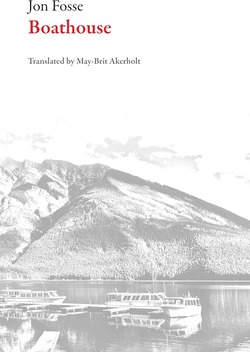Jon Fosse’s Aliss at the Fire (2003, tr: Damion Searls, 2010) is as much a showcase of his talent as dramatist as well as writer of prose. His characters converse with each other in only the most basic of utterances, and yet in this minimalism the unsaid is given powerful expression. In an opening scene, Signe finds Asle staring out the window of his long standing family home, and it’s clear something is eating away at him:
What are you thinking about, Signe says
No nothing special, Asle says
No, Signe says
I guess I, Asle says
Yes I, he says
and he stands there and looks at her
I, he says
I, I, yes well, I’ll just, he says
You, Signe says,
Yes, Asle says
You’ll, Signe says
I, Asle says
I guess I’ll go out onto the fjord for a while, he says
Today too, Signa says
I think so, Asle says
Whatever makes Asle desperate to get away from his wife, is at the heart of her long term grief following his disappearance that night in 1979. It’s 2002 now, and she’s watching this scene play out as she lies on a bench facing out the same window. How Signe sees this scene goes unmentioned, it could just as well be a memory as it is a timeslip or a ghostly imprint. But Fosse takes us back further than 1979, bringing us five generations of Asle’s family into a single moment in time, all the way back to Asle’s great-great grandmother, Aliss, in her mid-twenties and cooking a sheep’s head on a fire..
In doing this, Fosse opens up the role of fate in Asle’s family’s timeline. Aliss saved her son from drowning, while Asle’s great-uncle, also called Asle, was not so lucky on his seventh birthday. And, though we can presume Signe’s Asle is long dead, we can only speculate as to whether his death was determined by nature or choice. Where Aliss’s intervention enabled the lives that followed, there’s a clear significance in his unspoken scorn with Signe that brings the generations to an end.
Key to the book is Fosse’s singular style, that beats to its own rhythm, confidently shifting time and perspective mid-sentence. To watch the these various timelines overlap and interact is as intriguing as it is well executed, as restrained as it is expressive. While there’s little plot to Aliss at the Fire, the overarching story is rich in deep concerns. Why we choose those around us, how we stick by them, and how to deal with their loss are the deeper fjords Fosse is fishing.



